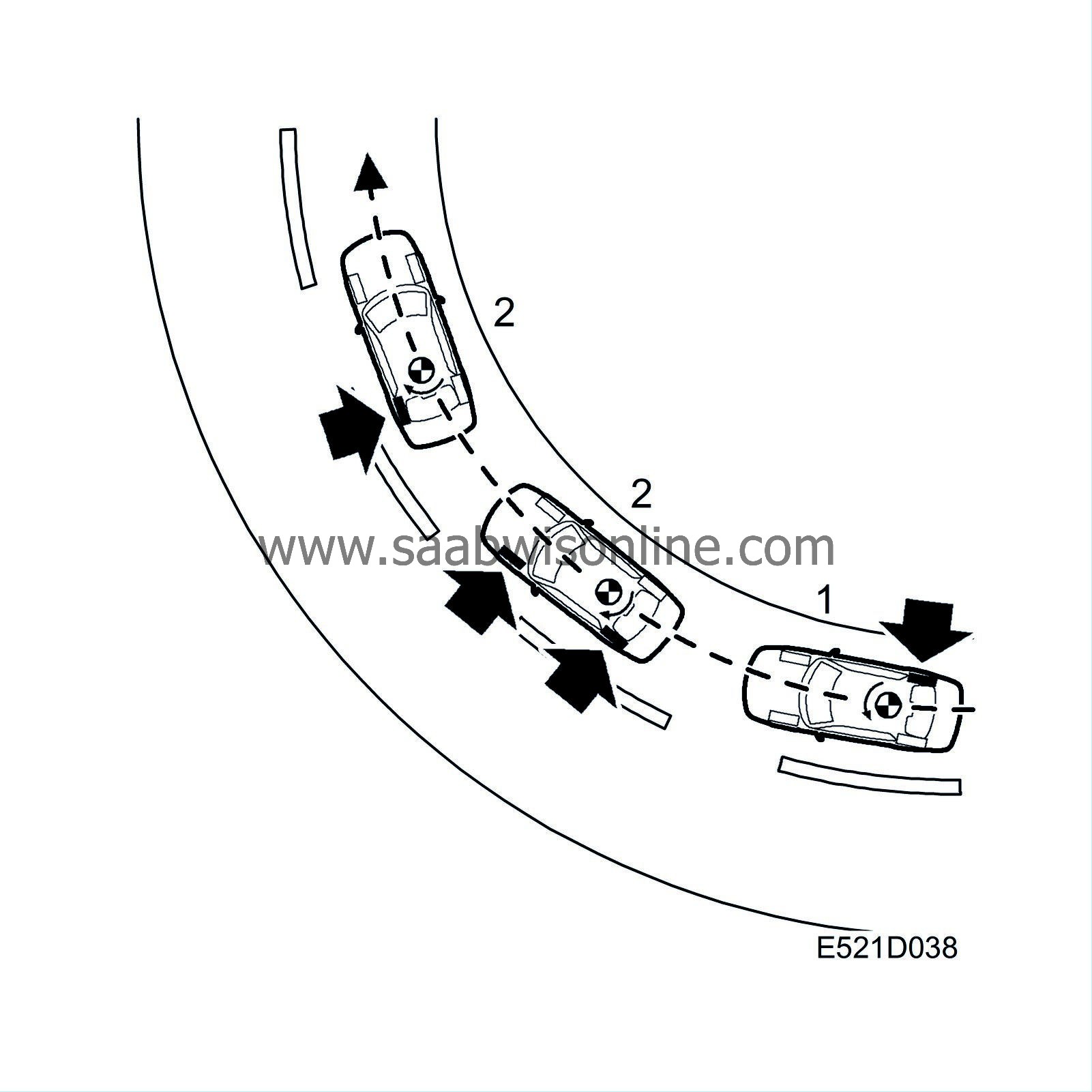Brief description, ESP
| Brief description, ESP |
ESP stands for Electronic Stability Program. This system regulates engine torque and braking to help the driver in unexpected situations that would otherwise be difficult to handle.
ESP comprises three systems that act together: ABS, TCS and ESP. For a description of ABS and TCS see the relevant descriptions of operation. In the event of a fault in the ESP or TCS system, both systems are switched off. The ABS will continue to function, so long as the fault does not affect the ABS function.
When the system is activated, it can counteract a skid, for example, by braking one or two of the wheels without the driver needing to touch the brake pedal. The system can also reduce engine torque with an engine torque request from the ESP control module to the engine control module, to reduce wheel spin.
The system calculates, with the help of information on wheel speeds, lateral acceleration and rotation about the vertical axis, how the vehicle is moving (actual value). This actual value is compared with information about the direction in which the driver wishes to steer (desired value). If the actual and desired values do not agree, the system takes corrective action by braking one or several wheels and/or limiting the engine torque.

| • |
In the event of understeer, the brakes are applied on the rear inside wheel.
|
|
| • |
In the event of oversteer, the brakes are applied on the outside wheels until the measured and calculated yaw rates are the same.
|
|
| Note | ||
|
ESP does not mean you can drive faster but should be regarded as a safety net for unexpected situations. |
It is important to point out that the system requires sufficient friction between the tyres and road surface. The driver must actively turn the steering wheel and consequently the wheels in the desired direction for the system to regulate correctly.
| Note | ||
|
The chassis setting of cars with ESP must not be changed from the works setting. It is not possible to reprogram the ESP control module for a different chassis setting. |
See also Brief description under ABS.
See also Brief description under TCS.


